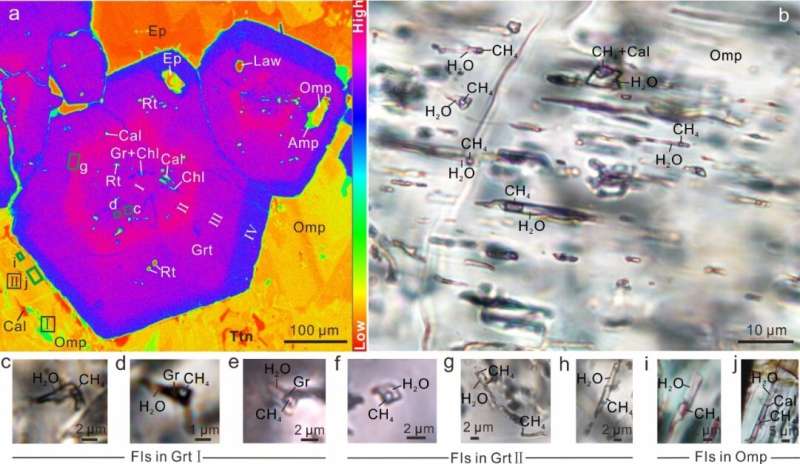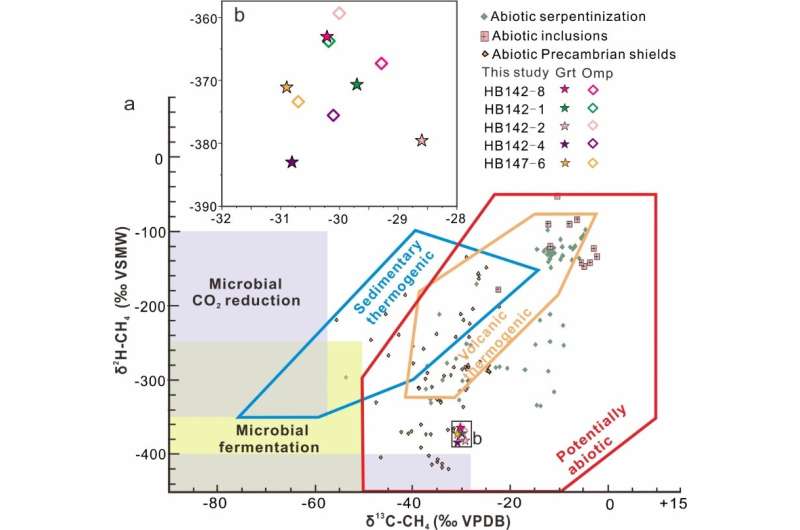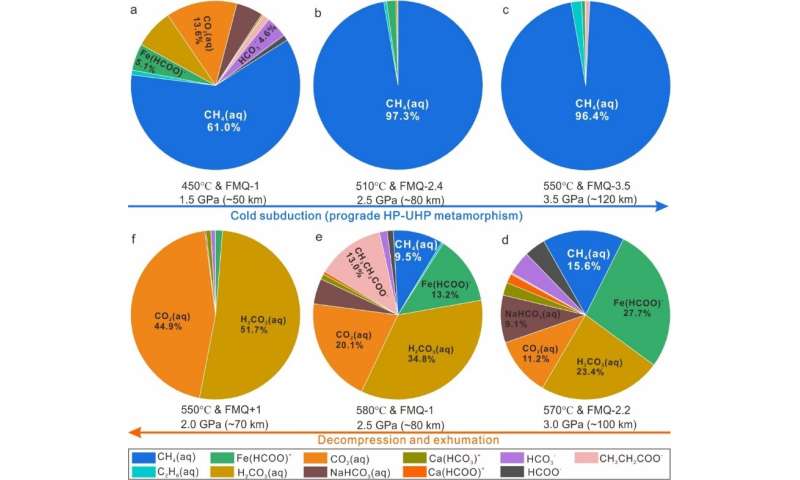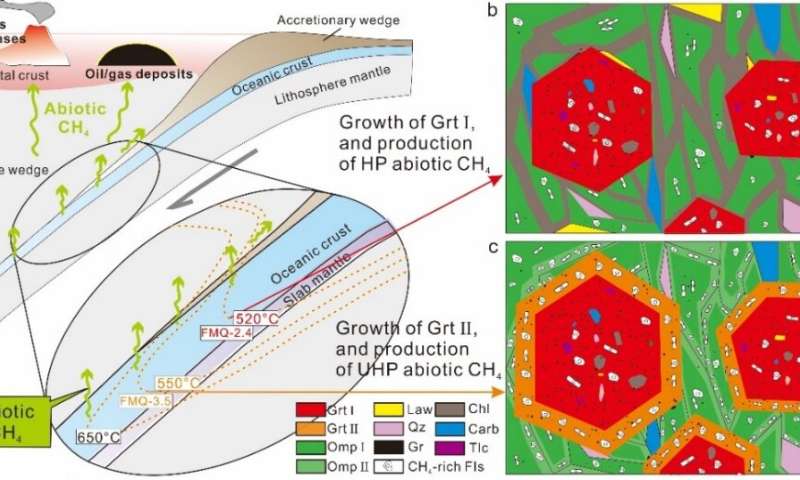What may be the largest source of abiotic methane gas on Earth

Methane (CH4), the chief constituent of natural gas, is one of the most widely used "clean" fuels. Although methane is usually considered to originate from organic matter, recently, more and more evidence shows that methane can be produced by abiotic processes.
In a recent paper published in National Science Review (NSR), Professor Lifei Zhang's team from Peking University demonstrated that large amounts of methane gas can form during prograde metamorphism in a cold subduction zone, evidenced by the massive CH4-rich fluid inclusions in eclogites from Western Tianshan, China.
Based on their calculation, the potential CH4 flux from worldwide modern subduction zones is estimated to be as much as ~10.8 Mt/y. Consequently, the subducted cold oceanic crust may produce the largest amount of abiotic methane, along with other abiotic methane sources such as that from mid-ocean ridges or that from by high-pressure serpentinization.
Massive CH4-rich fluid inclusions have been found in garnet and omphcite, which are the main constituent minerals of eclogite in the West Tianshan subduction zone (eclogite is the most important high grade metamorphic rock during cold subduction). Isotopic analyses and petrological studies both demonstrated that this methane was of abiotic origin and formed by water-rocks reactions during the prograde high-pressure to ultrahigh-pressure metamorphism.

Phase equilibrium and DEW simulations showed that the favorable temperature, pressure and oxygen fugacity conditions for abiotic methane formation were 450-560℃, 1.5-3.5 GPa, and FMQ-1 to FMQ-3.5 respectively. During the cold subduction and exhumation of the oceanic crust:
- When the oceanic crust subducted to ∼50 km, the carbon species in the fluids were dominated by reduced CH4, and its proportion is ~61%;
- When the oceanic crust subducted to ∼80 km, CH4 in the fluids reached the maximum of ~97%;
- When the oceanic crust subducted to 80-120 km, CH4 in the fluids remained at the maximum of ~97%;
- During the exhumation, CH4 in the fluids decreases drastically, while oxidized carbon species, such as CO2 and H2CO3, increase gradually.
-

Compositional variation of aqueous carbon species in eclogitic fluid along the P–T–fO2-fluid evolution trajectory. Credit: Science China Press -

Illustration of the abiotic CH4 production during prograde HP–UHP metamorphism during cold subduction. Credit: Science China Press
It can be inferred that the cold subduction zone is the factory of abiotic CH4 gas, which can form enormous methane gas.
"We report a large yet previously overlooked source of methane gas," Prof. Zhang said, "the released abiotic CH4 might contribute to natural gas deposits at shallow basins. Otherwise, if it goes into the atmosphere by degassing through arc volcanoes, an impact on climate can be expected given its large potential volume."
More information: Lijuan Zhang et al, Massive abiotic methane production in eclogite during cold subduction, National Science Review (2022). DOI: 10.1093/nsr/nwac207
Provided by Science China Press




















